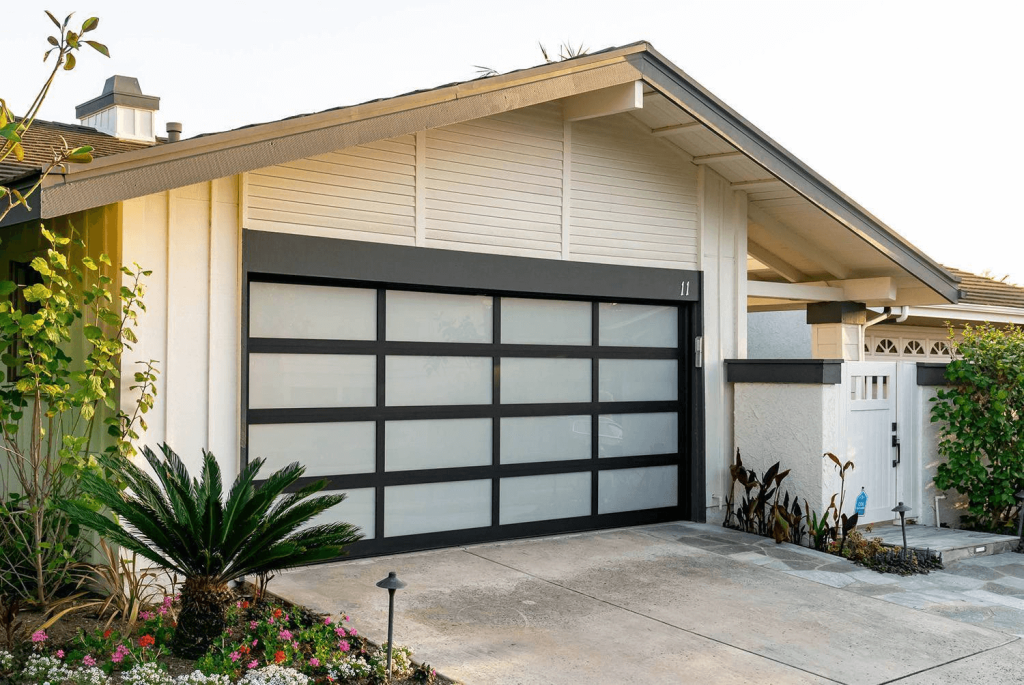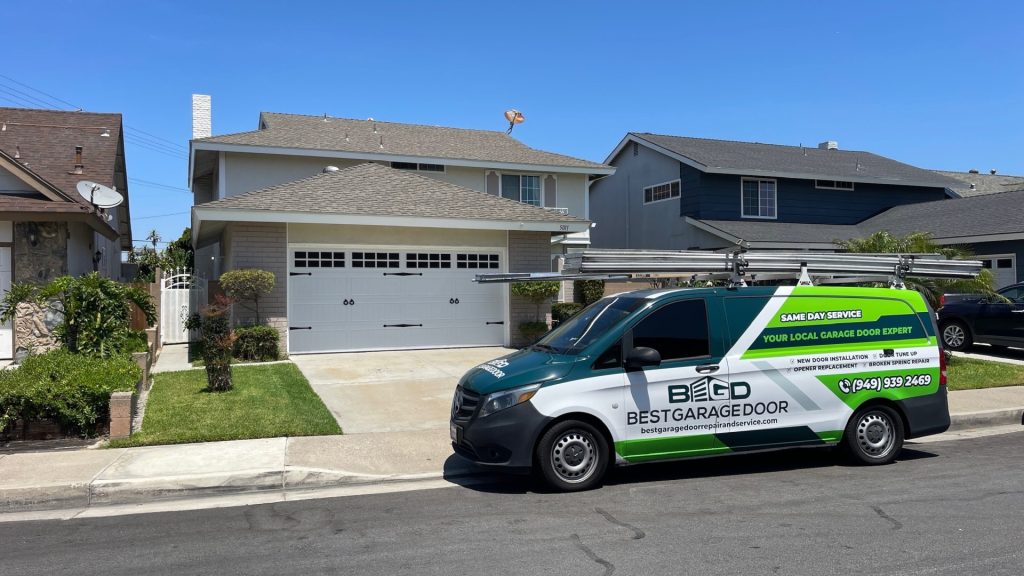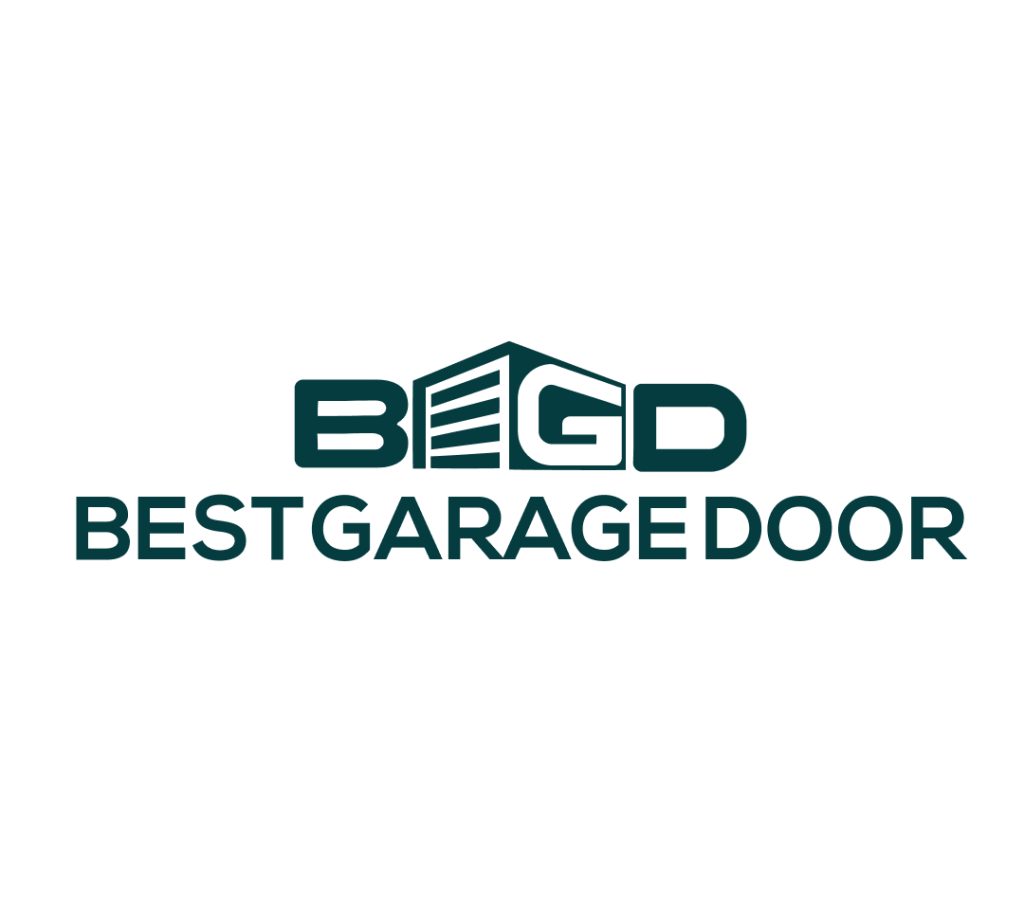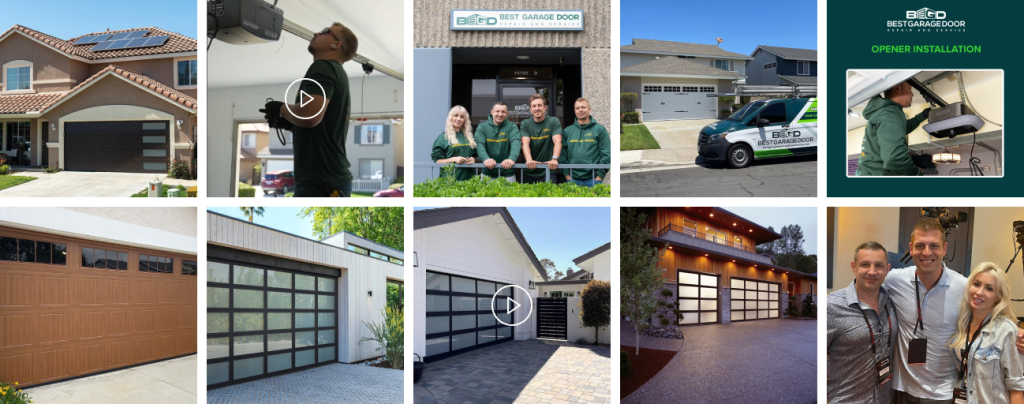
Introduction
Garage door safety is an often overlooked aspect of home security and functionality, yet its importance cannot be overstated. Thousands of homeowners face injuries and damages yearly due to malfunctioning garage doors. Every year, the Consumer Product Safety Commission reports over 10,000 injuries in the United States due to garage door incidents. These occurrences span from minor incidents to severe accidents, encompassing entrapments, and collisions caused by malfunctioning mechanisms.
At Best Garage Door Repair and Service (BGD), we believe that understanding and maintaining your garage door is essential for ensuring your family’s and home’s security. Effective maintenance and consistent care are crucial in minimizing the potential hazards linked to garage doors. This guide will share essential safety tips for homeowners to keep their garage doors functioning safely and efficiently. Let’s enhance your home’s safety by learning to properly manage and maintain your garage door system.
Understanding your garage door system
At Best Garage Door Repair and Service (BGD), recognizing the fundamentals of your garage door system is essential for guaranteeing its peak functionality and safety. Here’s a breakdown of what every homeowner should know:
Components of a garage door system
When considering the safety and functionality of a garage door system, it’s essential to understand each component’s role. Here’s a breakdown of the vital parts of a typical garage door system:
Panels: Panels are the individual sections or slats that make up the face of the garage door. They can be made from various materials such as wood, steel, aluminum, or fiberglass and are connected by hinges which allow the door to bend and roll up along the track. Torsion system:
- Springs: These are the heavy-duty coils that are central to the garage door’s balance and movement. They counteract the door’s weight, allowing for smooth opening and closing. Torsion springs are mounted above the door and store energy when the door is closed.
- Cables run from the bottom corners of the door to the torsion springs, winding and unwinding around the drum to manage the door’s movement.
- Torsion bar (tube): This steel shaft runs through the torsion springs, transferring the force of the springs to the cables and, ultimately, lifting the door.
Pulleys (drums): At the ends of the torsion bar, drums are wheel-like parts that the cables wrap around as the door opens and closes. They help to keep the wires tight and wound correctly. Hardware:
- Hinges: Positioned between the door panels, hinges allow the door to bend and fold as it opens and closes.
- Brackets: These are fixed to the bottom and top of the door to secure the cable and roller assembly.
- Rollers: These small wheels inserted into the sides of the door panels ride along the track, facilitating smooth movement of the door as it opens and closes.
Tracks: The metal guides that run vertically and horizontally on the sides of the garage door. The rollers move along these tracks as the door opens or closes. Proper alignment and stability of the tracks are essential for safe and reliable door operation.
Opener: This is a motorized device that automates the opening and closing of the garage door. It typically includes a power unit, a track, and a moving trolley connected to the door. Some openers have features like remote control, wall switches, and safety sensors. Understanding each of these components and their state of maintenance is critical to ensuring the smooth and safe operation of your garage door. Regular checks for wear and damage, coupled with professional servicing, can help prevent accidents and extend the door’s life.
Regular maintenance checks

Routine inspections are crucial to ensure the durability and safety of your garage door system. Integrating the comprehensive understanding of each component, here’s how you can ensure that every part of your system is in top condition: Inspect the panels: Look for any signs of damage, warping, or misalignment that could affect the door’s balance and functionality. Ensure all panels are securely fastened and free of damage that could impact the door’s structural integrity. Torsion system check:
- Springs: Carefully examine the torsion springs for signs of wear, rust, or damage. Due to the high tension, do not attempt to adjust or replace these independently. If a spring appears distorted or brittle, call for a professional service.
- Cables: Inspect the cables for indications of deterioration, such as fraying, rusting, or breaking. Given the high tension they operate under, any cable damage poses a severe safety risk and requires immediate attention from a qualified professional.
- Torsion bar (tube): Ensure the torsion bar is straight and securely attached at both ends. Check for signs of rust or wear.
Pulleys (drums): Look for smooth rotation and no drum chipping or cracking. Worn drums can cause cables to slip or catch, leading to further damage. Hardware health:
- Hinges: Check that all hinges are intact, not bent or broken, and are securely attached to the door panels.
- Brackets: Ensure that the brackets are firmly in place and have not become loose or detached from their mounting points.
- Rollers: Verify that rollers are not worn or chipped and roll freely in the tracks without binding or sticking.
Track alignment: Ensure the tracks on both sides are perfectly aligned, not bent or obstructed, and securely attached to the walls and ceiling. Misaligned tracks can cause wear on rollers and impede the door’s movement. Opener functionality:
- General operation: Test the door opener for smooth operation and listen for unusual sounds that could indicate wear or the need for lubrication or adjustment.
- Auto-reverse feature: This critical safety feature should be tested by placing a piece of wood or a similar object in the door’s path. If the door does not automatically reverse upon making contact, this is a serious safety concern and requires immediate professional attention.
By conducting these thorough checks, you can detect issues early, prevent accidents, and maintain the efficient operation of your garage door system. Remember, while the homeowner can perform routine lubrication and inspection, trained garage door professionals should always perform any repairs or adjustments to the torsion system.
The role of professional maintenance

While regular DIY checks are essential, the role of professional maintenance must be balanced. At BGD, our expert technicians provide comprehensive inspections and maintenance services beyond the basics. Here’s why professional servicing is crucial:
Safety: Professionals have the training to identify and fix issues that might be obscure to homeowners.
Longevity: Regular professional maintenance extends the life of your garage door system, preventing costly repairs or replacements.
Compliance: Up-to-date knowledge of safety standards and regulations ensures that your garage door system is compliant and safe.
Remember, while homeowners can perform maintenance tasks, professionals should only handle certain critical services. Relying on experts like those at BGD ensures that your garage door is in its best possible condition and keeps you and your family safe from malfunctions and accidents.
Safety tips for daily use
At Best Garage Door Repair and Service (BGD), ensuring your family’s safety and the effective operation of your garage door system is our top priority. Here’s an enhanced approach to using your garage door safely, considering all its components:
Operating your garage door safely
- Respect the torsion system: Never attempt to repair or adjust the springs, cables, or torsion bars yourself. The torsion system is under high tension and requires professional handling.
- Operate with care: Use the opener or handles to operate the door. Avoid manipulating it manually by its cables or torsion system components.
- Keep clear of components: When the door is in motion, ensure you and others, especially children, maintain a safe distance from the door’s path to avoid contact with moving parts like hinges, brackets, and rollers.
- Wait for full stop: Confirm the door has ceased movement before passing through.
Regularly test safety features
- Auto-reverse function: Conduct monthly checks on the auto-reverse feature by placing an obstruction, such as a piece of wood, on the ground beneath the door. If the door doesn’t automatically reverse, call BGD to address this critical safety issue.
Teaching safety to children
- Educate about components: Explain each component’s purpose and potential danger, such as the panels’ heavy weight and the high-tension torsion system.
- Implement clear rules: Forbid playing with or touching any part of the door, especially the pulleys (drums), hinges, and tracks.
- Supervised operation: Always monitor children’s interaction with the garage door and the opener, instilling a healthy respect for the system’s power and potential danger.
What to avoid
- Never dash under a moving door. Racing under a moving door can cause injury, as the door may not reverse in time to prevent an accident.
- Discourage misuse: Climbing or hanging on any part of the door, like panels or tracks, is unsafe and can damage the door.
- Do not turn off safety devices: Safety features, such as the sensors for the auto-reverse function, are vital. They must remain active and intact.
Conduct regular maintenance
- Lubricate hardware: Apply appropriate lubricant to rollers and hinges to maintain smooth operation. Check that rollers are correctly seated in the tracks.
- Test the opener: Ensure your opener functions correctly and the door responds promptly to all commands.
- Inspect the tracks: To prevent potential misalignment or malfunction, keep the tracks free of debris.
By embracing these safety measures, which consider the complexities of each component, you ensure that your garage door is secure and a safe aspect of your daily home life. Remember, professional assistance from BGD is just a call away for any concerns or maintenance needs.
Handling emergencies

At Best Garage Door Repair and Service (BGD), we’re fully aware of the sudden emergencies that can occur with garage door systems. Recognizing the complexity of each component, we advise on the best course of action during such situations. Here’s an expanded guide on addressing garage door emergencies, considering the intricate makeup of your garage door system:
Standard garage door emergencies involving key components
Spring failure: Torsion spring issues are one of the most common emergencies. A broken spring affects the balance and movement of the door, often rendering it inoperable.
Door off track: If rollers become dislodged from the tracks, possibly due to worn hinges or damaged brackets, the door can become unstable and unsafe.
Opener malfunction: An erratic or unresponsive opener can be caused by electrical issues or a misaligned torsion bar and requires immediate attention.
Pulley problems: Dysfunctional pulleys may cause the door to open unevenly or get stuck, posing a significant risk.
Accidental damage: Direct impacts to panels or hardware can compromise the entire door system’s integrity.
Immediate actions to take
Stop operation immediately: Discontinue use to prevent further damage, especially if issues arise with the torsion system or the door panels.
Secure the area: Ensure no one, especially children, is near the door. This is crucial if the door’s stability is compromised due to track misalignment or hardware issues.
Disconnect the opener: Disengage it to avoid accidental activation, especially if you suspect issues with the torsion system or the opener itself.
When to call the professionals
Torsion system issues: Professionals must address spring, cable, or torsion bar problems due to the high risk of handling these high-tension components.
Track and roller inspection: If the door is off its tracks or rollers and brackets are damaged, professional expertise is necessary to realign and repair the door safely.
Comprehensive hardware check: If there’s an urgent situation concerning hinges, brackets, or panels, our specialists are equipped to evaluate and fix any issues promptly, guaranteeing that your door remains safe and operational.
Opener electrical concerns: For opener malfunctions, particularly those related to its electrical system, a professional can diagnose and fix the issue safely.
Enhancing garage door safety
We’re committed to maximizing your safety through the latest advancements in garage door technology. Understanding and upgrading the safety features across all garage door components can protect your family and enhance the system’s performance and lifespan.
Up-to-date safety features across all components
Modern garage doors are equipped with sophisticated safety features that cover every critical component:
Auto-reverse mechanism: Integrated within the opener system, this feature relies on sensors that can halt and reverse the door if obstructions, such as pets or children, are detected under the door, preventing entrapment.
Motion detection lights: This security enhancement illuminates your garage when activity is detected, improving visibility and deterring lights that can be connected to the opener or other movable parts like the track, ks, or rollers for triggered lighting.
Manual release handle: Typically attached to the opener or the torsion bar, this allows for manual control of the garage door during power outages, ensuring you can still operate the door without electricity.
Tamper-resistant brackets and hardware: Specially designed hinges, brackets, and rollers minimize the risks associated with the high-tension torsion system. These components are engineered to prevent accidental release of the tension that could lead to injury.
Rolling code technology: Integrated into the opener, this security feature changes the opener’s remote access code after each use, preventing unauthorized access and enhancing the security of your garage door.
Why upgrade your garage door components
Upgrading individual components of your garage door system can significantly improve overall safety and functionality:
Enhanced safety features: Including the latest in torsion springs, cables, and torsion bars, as well as safety cables that prevent springs from snapping off, ensures your system adheres to the highest safety standards.
Improved security: Upgrades to brackets, hinges, and rollers can enhance the door’s structural integrity, while modern openers with advanced encryption protect against breaches.
Quieter operation: More recent rollers and openers provide a more seamless and quieter performance, especially for residential neighborhoods and garages close to living areas.
Smart home Integration: By adding innovative technology to the opener and associated components, you can monitor and control your door from your smartphone, increasing both convenience and security.
Energy efficiency: Newly developed torsion systems and openers are crafted with enhanced efficiency, minimizing energy usage and lowering associated expenses.
Let us assist you in choosing and installing the most up-to-date and secure components tailored to your garage door system. Upgrading enhances safety, adds value to your home, and ensures your garage door operates reliably for years. Contact us today to explore the best options for your garage door system and take the next step toward a safer and more efficient home.
Conclusion
Ensuring the safety of your garage door is not just about preventing accidents—it’s about securing the well-being of your family and protecting your property. Best Garage Door Repair and Service (BGD) is committed to providing top-quality service and the latest garage door safety technology.
To recap, maintaining your garage door involves:
Regular inspections and maintenance: Keeping up with regular checks ensures that all components are functioning correctly and safely.
Educating your household: Understanding how to operate the garage door safely and teaching this to all family members, especially children, can prevent accidents.
Upgrading your system: Modern safety features and newer models of garage door openers offer enhanced security and convenience, making upgrades a wise investment for home safety.
While some maintenance can be done, professional servicing is critical to ensuring that complex mechanisms are correctly handled and maintained. Be aware of the significance of keeping your garage door in optimal condition before an emergency arises.
Secure your home: Schedule your garage door safety inspection with BGD today.
Don’t compromise on safety. Schedule a professional inspection with Best Garage Door Repair and Service today. Our skilled technicians will guarantee that your garage door has the most up-to-date safety features and performs at peak performance.
Contact us today
At Best Garage Door Repair and Service (BGD), we are committed to providing exceptional service and ensuring your garage door safety. Whether you require a regular inspection, urgent repairs, or desire to enhance your garage door system, our proficient team is prepared to provide the necessary support.
Phone: Call us at +1 (949) 939-2469. Our customer service team can promptly answer your questions and schedule your service appointments.
Email: For inquiries or to arrange a consultation, email us at [email protected]. We will respond quickly to address your garage door requirements and explore how we can assist.
Online: Visit our website. Here, you can find detailed information about our services and utilize our easy online booking tool to schedule your appointment at your convenience.
Ensuring your safety and contentment stands as our foremost commitment. Contact BGD today to ensure your garage door is in the best hands.




